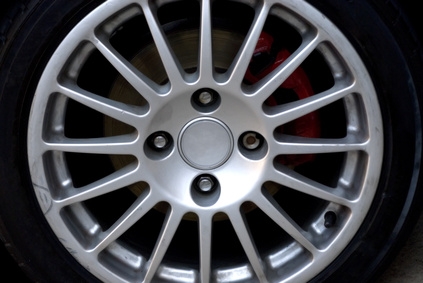
When installing the wheels on any vehicle, it is critical that you tighten the wheel lug nuts to the manufacturer's torque specifications. The torque is the measurement in foot-pounds that describes how tightly the nuts are fastened. If they are too loose, the wheel will not be properly and safely attached to the vehicle. If they are too tight, the nuts can "stretch," causing cracking, shearing, loosening and breaking. It is thus imperative for the vehicle's handling and safety that you torque the nuts accurately.
Research the wheel lug nut torque specifications for your vehicle. You can find them in your owner's manual, at a dealership and at most mechanic shops.
Find the correct number of bolts/lug nuts and lug nut sizes you need for your vehicle. These specifications are available in most user guides or from dealers and mechanics.
Use a thread chaser or tap to ensure that the threads on the lug nuts are clean and dry. Otherwise you may not measure the torque accurately.
Fasten the lug nuts to the vehicle with a lug nut wrench.
Use a torque wrench to finish tightening and to accurately torque the lug nuts at the manufacturer's specifications. Torque the nuts in a criss-cross pattern across the wheel to ensure uniformity.
Re-torque the nuts after you have driven the vehicle between 50 and 100 miles, especially if you have new wheels. This adjusts for any metal warping that may have occurred while breaking in new wheels or bolts.